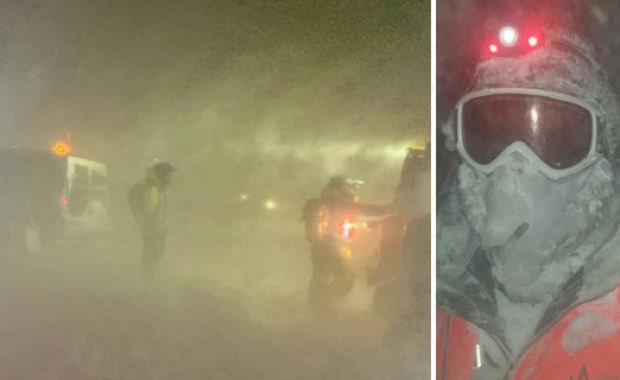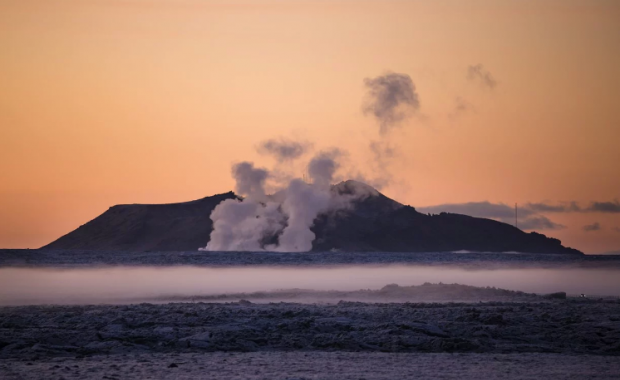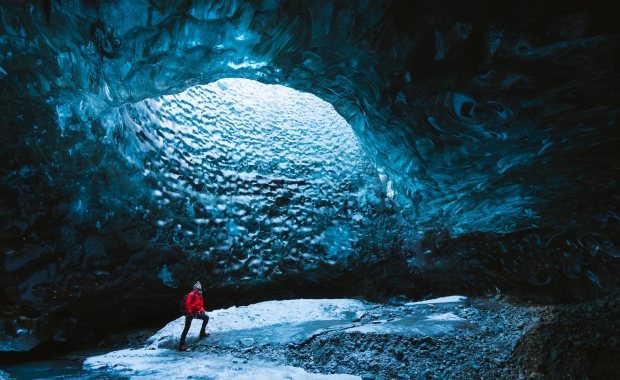The cottages and huts in Þórsmörk nature reserve’s Húsadalur valley will be open through the winter months for the first time.
The breathtakingly beautiful nature reserve is located in Iceland’s south central highlands and the area is surrounded by glaciers, bursting glacial rivers and lush green valleys.
Read more: Breaking Bad star blown away by Iceland
The company behind the cottages and the huts is called The Volcano Huts, and in addition to the accommodation supplies local food, tours and activities in the area. It also operates a 4×4 bus that runs daily to and from the Volcano Huts between 1 May and 15 October, with up to three departures every day. People can take the bus all the way from the BSÍ station in Reykjavík, or change from their own car and hop on or off the bus at various locations along the way. Connections are available for travellers arriving from or going to other locations.
During the winter months, from 15th October to 30th April, the Volcano Huts are only open for groups.
Þórsmörk is around 150 km (93 mi) from Reykavík. The drive to the reserve from the Ring Road (Highway 1) is around 32 km (20 mi). The route is a gravel road and only suitable for 4×4 vehicles as there are several unbridged rivers that must be crossed during the drive.
Read more: Dangerous rivers in South Iceland, precaution advised when crossing
By foot
You can also reach Þórsmörk by foot, The 25-kilometre-long (15.5 mile) hiking trail from Skógarfoss waterfall in South Iceland to Þórsmörk is very popular. Along the way, one traverses natural wonders such as Fimmvörðuháls, a pass between Mýrdalsjökull glacier and the Eyjafjalljökull glacier ice caps. Both glaciers are also among Iceland’s most active volcanoes.
Iceland’s most famous hiking trail, lies between Þórsmörk and Landmannalaugar nature reserve in the south central highlands. Due to it’s popularity the route is called Laugavegur, which is a reference to Reykjavík’s main shopping street. The route is 55 km (34.5 mi) and is usually done in three to five days. It is basically the whole spectrum of Iceland’s interior landscape compressed in one trip, taking you up and down beautiful desolate volcano hills, over bursting glacial rivers and clear blue water streams, alongside glaciers and rugged mountains, through lava fields, geothermal areas and green valleys.
Both hiking routes are first and foremost done late summer and early autumn.
Hiking from Skógar to Þórsmörk is currently impassable (closed) due to bad weather conditions and snow, and the Laugavegur hiking trail is at this time of the year only recommended for experienced mountaineers.
Please keep in mind that the weather can be very unpredictable in Iceland. You should always submit a travel plan at safetravel.is if you are planning a long hike.
Crossing unbridged rivers
Be very careful while driving along mountain roads. Unbridged rivers can suddenly become dangerous due to weather conditions and a sudden increase in precipitation. Furthermore, crossing rivers can be quite dangerous, especially if travellers do not have the expertise and if they are driving small jeeps. When in doubt about whether to cross or not, a good rule to follow is: Do not drive into rivers that you would not attempt to wade into.
The cottages and huts in Þórsmörk nature reserve’s Húsadalur valley will be open through the winter months for the first time.
The breathtakingly beautiful nature reserve is located in Iceland’s south central highlands and the area is surrounded by glaciers, bursting glacial rivers and lush green valleys.
Read more: Breaking Bad star blown away by Iceland
The company behind the cottages and the huts is called The Volcano Huts, and in addition to the accommodation supplies local food, tours and activities in the area. It also operates a 4×4 bus that runs daily to and from the Volcano Huts between 1 May and 15 October, with up to three departures every day. People can take the bus all the way from the BSÍ station in Reykjavík, or change from their own car and hop on or off the bus at various locations along the way. Connections are available for travellers arriving from or going to other locations.
During the winter months, from 15th October to 30th April, the Volcano Huts are only open for groups.
Þórsmörk is around 150 km (93 mi) from Reykavík. The drive to the reserve from the Ring Road (Highway 1) is around 32 km (20 mi). The route is a gravel road and only suitable for 4×4 vehicles as there are several unbridged rivers that must be crossed during the drive.
Read more: Dangerous rivers in South Iceland, precaution advised when crossing
By foot
You can also reach Þórsmörk by foot, The 25-kilometre-long (15.5 mile) hiking trail from Skógarfoss waterfall in South Iceland to Þórsmörk is very popular. Along the way, one traverses natural wonders such as Fimmvörðuháls, a pass between Mýrdalsjökull glacier and the Eyjafjalljökull glacier ice caps. Both glaciers are also among Iceland’s most active volcanoes.
Iceland’s most famous hiking trail, lies between Þórsmörk and Landmannalaugar nature reserve in the south central highlands. Due to it’s popularity the route is called Laugavegur, which is a reference to Reykjavík’s main shopping street. The route is 55 km (34.5 mi) and is usually done in three to five days. It is basically the whole spectrum of Iceland’s interior landscape compressed in one trip, taking you up and down beautiful desolate volcano hills, over bursting glacial rivers and clear blue water streams, alongside glaciers and rugged mountains, through lava fields, geothermal areas and green valleys.
Both hiking routes are first and foremost done late summer and early autumn.
Hiking from Skógar to Þórsmörk is currently impassable (closed) due to bad weather conditions and snow, and the Laugavegur hiking trail is at this time of the year only recommended for experienced mountaineers.
Please keep in mind that the weather can be very unpredictable in Iceland. You should always submit a travel plan at safetravel.is if you are planning a long hike.
Crossing unbridged rivers
Be very careful while driving along mountain roads. Unbridged rivers can suddenly become dangerous due to weather conditions and a sudden increase in precipitation. Furthermore, crossing rivers can be quite dangerous, especially if travellers do not have the expertise and if they are driving small jeeps. When in doubt about whether to cross or not, a good rule to follow is: Do not drive into rivers that you would not attempt to wade into.






